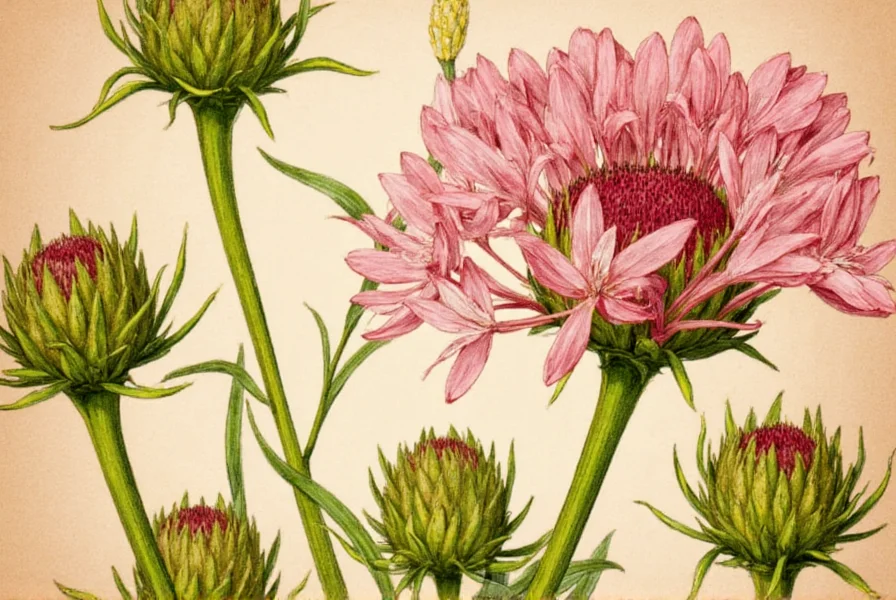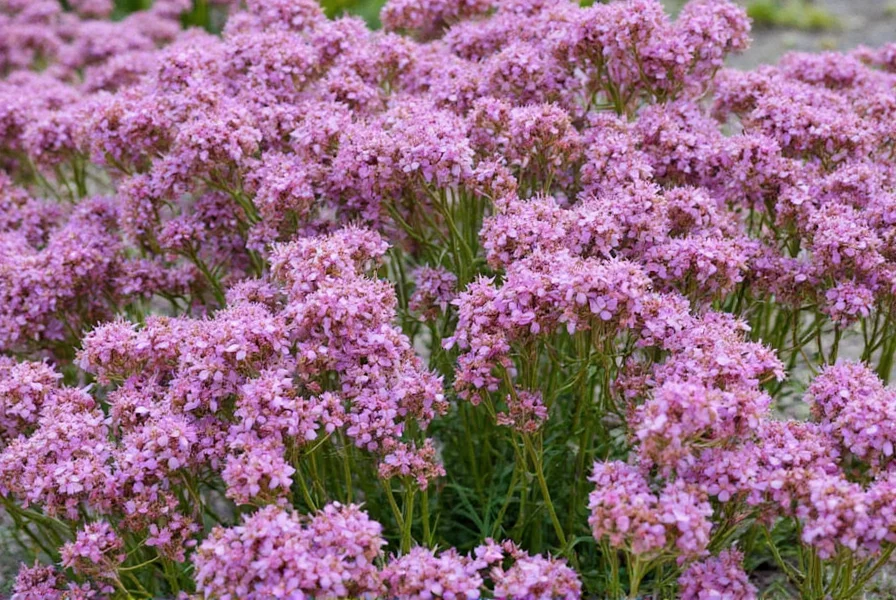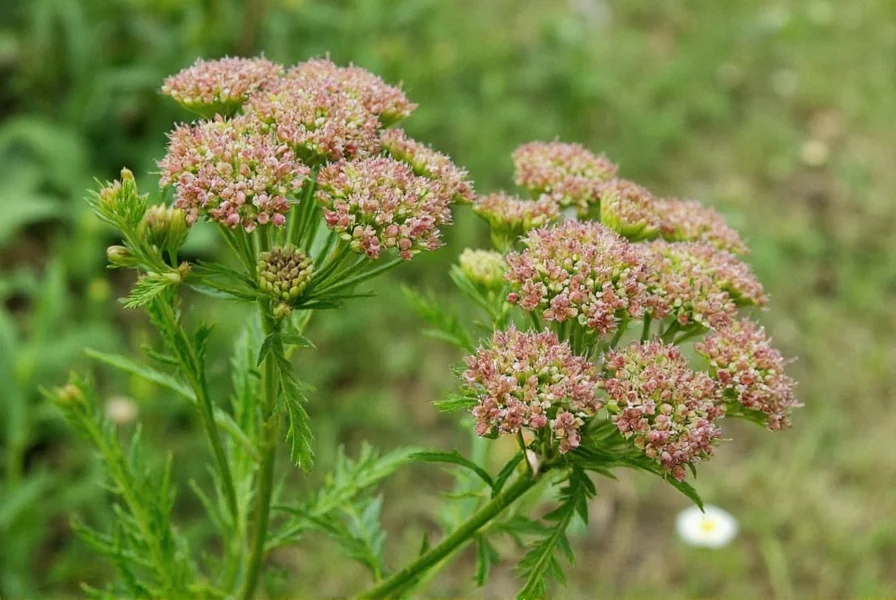"Flower anise" isn't a recognized botanical term. Most searchers likely confuse it with star anise (Illicium verum), anise (Pimpinella anisum), or anise-scented flowers like anise hyssop. Star anise refers to the star-shaped fruit pods, not flowers, while true anise produces small white flowers but is cultivated for its seeds. Understanding these distinctions prevents gardening and culinary mistakes.
Many gardeners and cooks searching for "flower anise" encounter confusion due to similar-sounding botanical names. This article clarifies the terminology, identifies the plants people actually seek, and provides accurate horticultural information to help you grow and use these aromatic plants correctly.
Understanding the Anise Terminology Confusion
The term "flower anise" creates widespread misunderstanding because it combines two unrelated concepts: floral characteristics and anise flavor. True anise (Pimpinella anisum) produces delicate white flowers in伞-shaped clusters, but we harvest its seeds, not flowers, for culinary use. Star anise (Illicium verum) gets its name from star-shaped fruit pods, not flowers, and belongs to a completely different plant family than true anise.
When researching what is flower anise in gardening, you'll find most references actually point to:
- Anise hyssop (Agastache foeniculum) - produces purple flower spikes with an anise scent
- Fennel flowers (Foeniculum vulgare) - yellow blooms from the same plant yielding fennel seeds
- Star anise tree flowers - the actual flowers that precede the distinctive star-shaped fruit
| Plant | Flower Characteristics | Primary Use | Botanical Family |
|---|---|---|---|
| True Anise | Small white flowers in umbels | Seeds for flavoring | Apiaceae |
| Star Anise | Pinkish-white flowers | Fruit pods for spice | Schisandraceae |
| Anise Hyssop | Purple flower spikes | Leaves and flowers for tea | Lamiaceae |
| Fennel | Yellow flower clusters | Seeds, leaves, and bulbs | Apiaceae |
Star Anise: The Most Common Misidentification
When people search for flower anise vs star anise, they're usually looking for information about star anise. The star anise tree (Illicium verum) produces attractive pinkish-white flowers that develop into the familiar eight-pointed star fruit pods. These trees grow in subtropical regions and require specific conditions to thrive outside their native habitat in China and Vietnam.
Gardeners attempting to grow star anise should know it takes 6-10 years to produce fruit. The flowers themselves have minimal fragrance compared to the potent aroma of the mature fruit pods. Many commercial "star anise" products actually contain Japanese star anise (Illicium anisatum), which is toxic—making proper identification crucial for safe use of anise-flavored plants.

Anise-Scented Flowers Worth Growing
If you're searching for flowers that smell like anise, several excellent garden options exist:
Anise Hyssop (Agastache foeniculum)
This North American native perennial produces striking purple flower spikes that attract pollinators while emitting a delightful anise-mint fragrance. Unlike true anise, anise hyssop thrives in temperate climates and requires minimal care. Gardeners value it for both ornamental and culinary purposes—its leaves and flowers make excellent herbal teas.
Fennel Flowers
Fennel's bright yellow flower clusters develop after the plant bolts in its second year. These flowers eventually produce the familiar fennel seeds used in Mediterranean cuisine. While not as strongly anise-flavored as the seeds, the flowers add visual interest to gardens and can be used fresh in salads.
Identifying and Using Anise-Scented Plants Safely
Proper identification prevents dangerous mistakes, especially when foraging. How to identify real flower anise plants requires attention to multiple characteristics:
- True anise has feathery leaves and small white flowers in flat umbels
- Anise hyssop features square stems, opposite leaves, and vertical purple flower spikes
- Fennel displays hollow stems and finely dissected fronds
- Star anise grows as a tree with leathery leaves and distinctive star-shaped fruit
When using any anise-scented plant, remember that some look-alikes like poison hemlock (Conium maculatum) can be deadly. Always verify plant identification through multiple reliable sources before consumption. The difference between edible and toxic anise-scented plants could be a matter of life and death.
Growing Guide for Anise-Scented Plants
Whether you're interested in growing flower anise in your garden or cultivating star anise, these cultivation tips ensure success:
- Soil requirements: Most anise-related plants prefer well-draining soil with moderate fertility
- Sun exposure: Full sun (6+ hours daily) produces the strongest aromatic compounds
- Water needs: Regular watering during establishment, then moderate once established
- Climate considerations: True anise and fennel grow as annuals in cold climates; star anise requires USDA zones 7-10

Common Misconceptions Clarified
Several persistent myths surround anise-related plants. Understanding these prevents gardening and culinary errors:
- Myth: Star anise comes from the same plant as anise seed Fact: They belong to different plant families with no botanical relationship
- Myth: All anise-scented plants are safe to consume Fact: Poison hemlock smells similar but is extremely toxic
- Myth: "Flower anise" is a standard horticultural term Fact: No recognized plant bears this exact name
When researching what does flower anise look like, focus on specific plants like anise hyssop or star anise rather than the ambiguous term. This approach yields more accurate information for gardeners and cooks alike.
Frequently Asked Questions
Is there actually a plant called flower anise?
No, "flower anise" isn't a recognized botanical name. The term typically refers to either star anise (which describes the fruit shape, not flowers), anise hyssop (which produces anise-scented flowers), or confusion with true anise plants. Gardeners and cooks should use precise botanical names to avoid confusion.
What plant has flowers that smell like anise?
Anise hyssop (Agastache foeniculum) produces purple flower spikes with a distinct anise-mint fragrance. Fennel also develops yellow flowers that retain some anise-like aroma, though less pronounced than its seeds. Both plants safely provide the anise scent people often search for as "flower anise."
Can I grow star anise in a temperate climate?
Star anise (Illicium verum) requires subtropical conditions (USDA zones 7-10) and typically won't survive freezing temperatures. In temperate climates, consider growing anise hyssop instead, which provides similar aromatic properties with much greater cold tolerance. Star anise trees take 6-10 years to produce fruit, making them impractical for most home gardeners outside their native range.
Are all anise-scented plants safe to eat?
No, this is a dangerous misconception. Poison hemlock (Conium maculatum) smells similar to anise but is extremely toxic. Always positively identify plants using multiple characteristics before consumption. True anise, anise hyssop, and fennel are safe when properly identified, but never rely solely on scent for plant identification.
What's the difference between star anise and anise seed?
Star anise comes from Illicium verum (a tree in the Schisandraceae family) and refers to its star-shaped fruit pods. Anise seed comes from Pimpinella anisum (an herb in the Apiaceae family). Though both contain anethole (providing similar flavor), they're botanically unrelated. Star anise has a stronger, more licorice-like flavor and is often used in Chinese cuisine, while anise seed features prominently in Mediterranean cooking.











 浙公网安备
33010002000092号
浙公网安备
33010002000092号 浙B2-20120091-4
浙B2-20120091-4